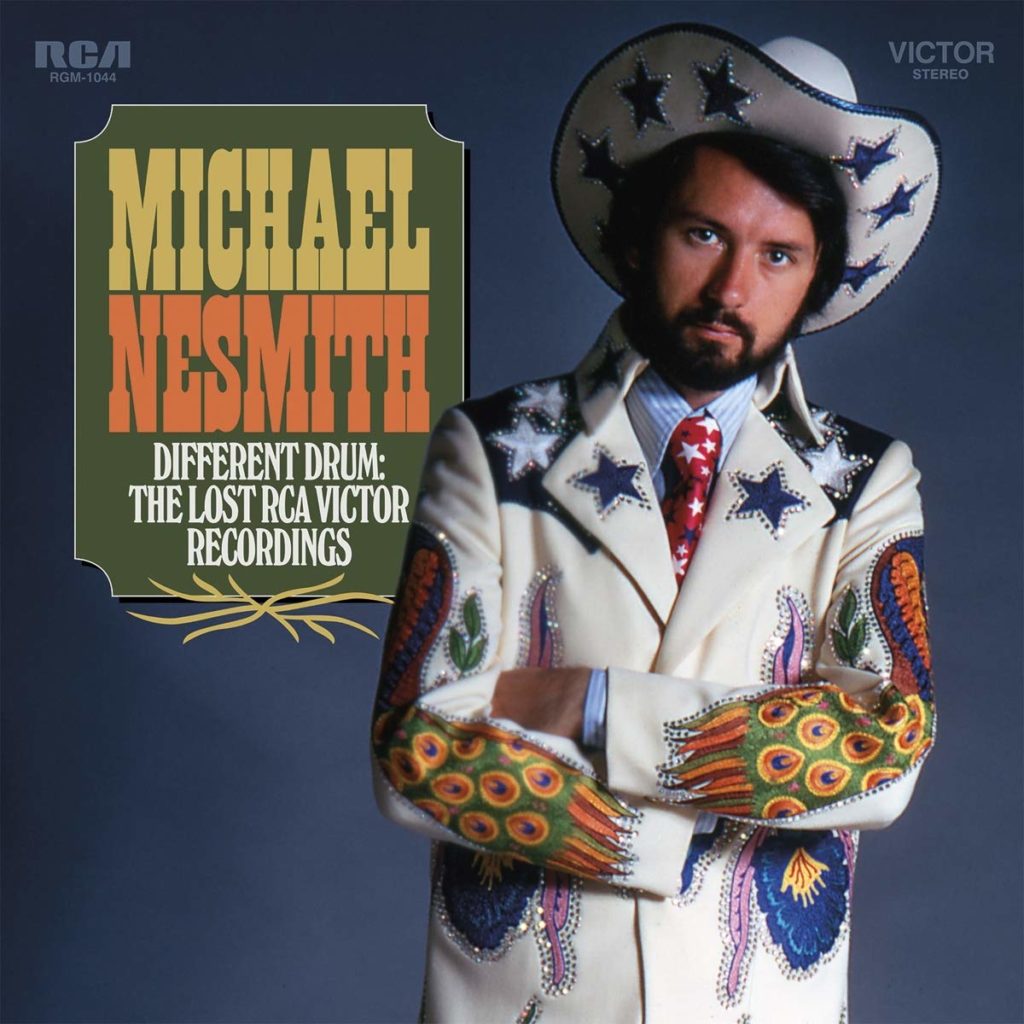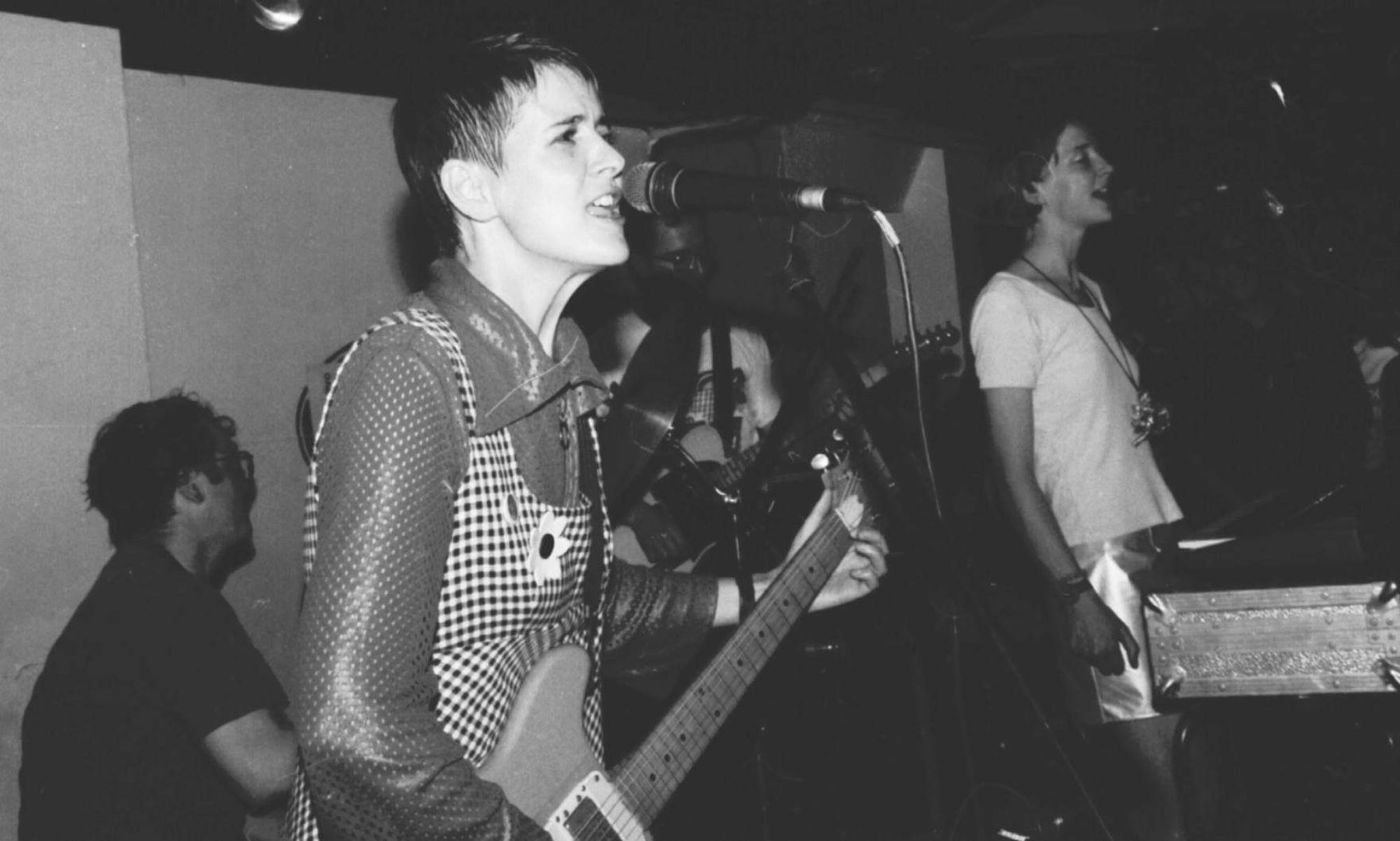by theresa kereakes

The very existence of Mike Nesmith inspired me my entire life, whether I was aware of it or not, from the time I first heard “Different Drum” until I took an early retirement from PBS.
Mike Nesmith was a fearless visionary. He was not afraid to follow his whims, and he was not afraid to defend himself. If all he had done was compose “Different Drum,” he’d still be lauded, but for decades after writing the song that would put Linda Ronstadt on all our radar, he continued to experiment and invent delightful escapes into storytelling, whether through book, song, or visuals.
Little did I know in 1966, when I was 8 years old, I was completely swept up in boy-band-mania because of the excellent job NBC-TV’s PR team did when they launched The Monkees television show. TV Guide first introduced me to The Monkees and in short order, a magazine called Tiger Beat appeared out of nowhere and featured them all the time. I also didn’t realize that the publishers of Tiger Beat had a stranglehold on the teen “consumer” market and worked in lockstep with the television networks and record companies for mutual benefit. It makes sense now, and it also doesn’t matter because it was through the pop culture mill that I discovered the Monkees, the Brill Building songwriters, and Mike Nesmith, who passed away on December 10, 2021, just 20 days shy of his 79th birthday.
The TV Guide introduction to The Monkees set them up as a parallel to The Beatles, whose own image was turned into a cartoon series debuting on television one year earlier. The story had brief bios on each band member/actor, and to this kid, they all seemed bonafide. Clearly, the TV Guide writer and editor were copying the NBC press releases as they identified Nesmith as “Wool Hat,” which was not only a stupid nickname, but never caught on. Again, I realize this 50+ years later.
During my childhood and adolescence, all things Mike Nesmith slowly seeped into my consciousness and formed my artistic preferences. It was no mystery why I liked his Monkees songs the best. He wrote “Different Drum,” a hit song for the Stone Poneys that I cranked whenever it came on the radio. When I bought Monkees’ singles, I always preferred the Nesmith-penned B-sides, particularly “The Girl I Knew Somewhere” over the hit A-side, Neil Diamond’s “A Little Bit Me, A Little Bit You.” And from this, I also learned about songwriters and the Brill Building, for in addition to Neil Diamond, Carole King and Gerry Goffin were supplying songs for The Monkees.
In the situation comedy itself, while we’ll never know if the screenwriters crafted the TV Monkees’ personalities to match the real-life Monkees’ personalities, Mike always came across as the normal one and the one true musician. Mike Nesmith set the bar for 8-year-old me and how I would evaluate musicians in the future.
During the year I started working at PBS, the organization made a deal with Nesmith’s prescient video production and distribution company, Pacific Arts, to distribute PBS produced programs (most notably Ken Burns’ The Civil War, as well as a slew of other less noteworthy bulk). At a point in the relationship, things soured, and my employer was so clearly in the wrong. When you work in law firms or corporate legal departments, you work to develop a clear separation of how you feel versus the job you must do. But this one was impossible to rationalize. My relationship with PBS lasted as long as Nesmith’s. While his relationship was filled with lawsuits and trials (in which he prevailed, and gloriously), mine was an easy exit. As a government-funded entity that must have its operating budget reauthorized by Congress every three years, many of the stations made attractive early retirement packages for employees. I took one the year that the Pacific Arts relationship crashed. Although I was a member of the legal department, I was not involved in the Pacific Arts deal. But due to my membership on this team, I was peripherally part of the ruination of Mike Nesmith – my childhood idol – and his pioneering media company.
However, by also seeing peripherally into what Mike Nesmith had forged in the media landscape brought me back to punk rock and DIY. Mike didn’t invent punk rock, but he most certainly took DIY to new heights at a parallel time. I’m sorry I never saw a Monkees reunion show, but I cherish my old 7-inch singles and will continue to travel to the beat of a different drum. I thank Mike Nesmith for putting a name on it.
Learn more about Theresa Kereakes here in our interview.
